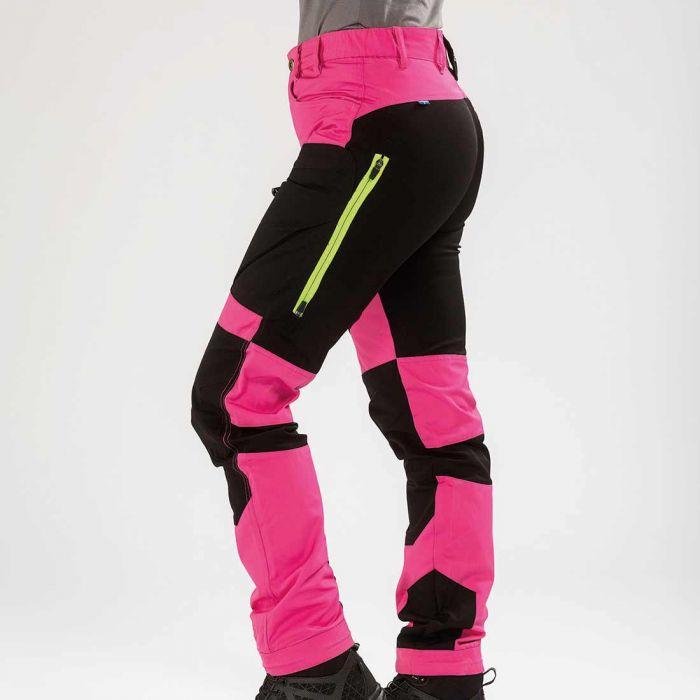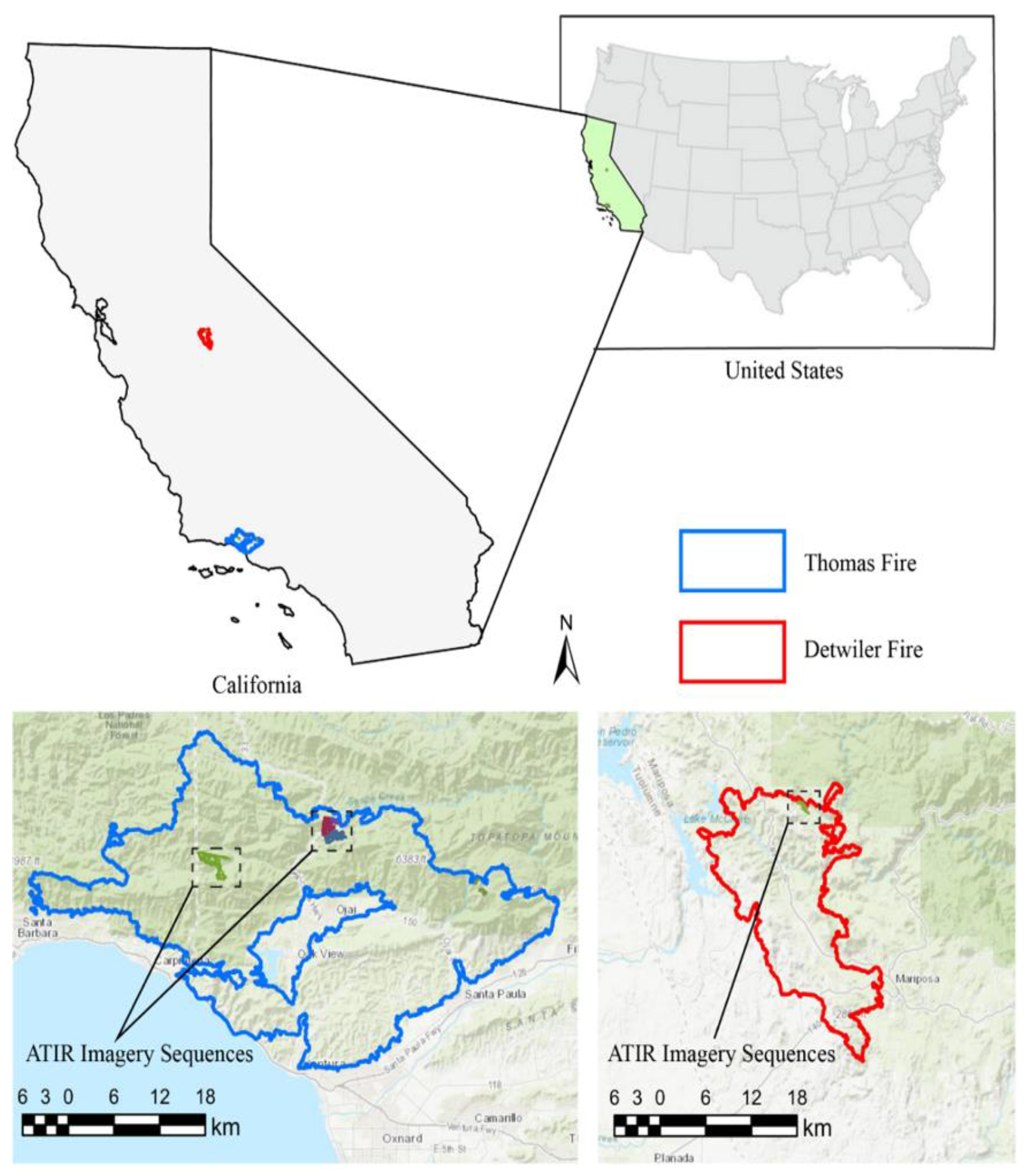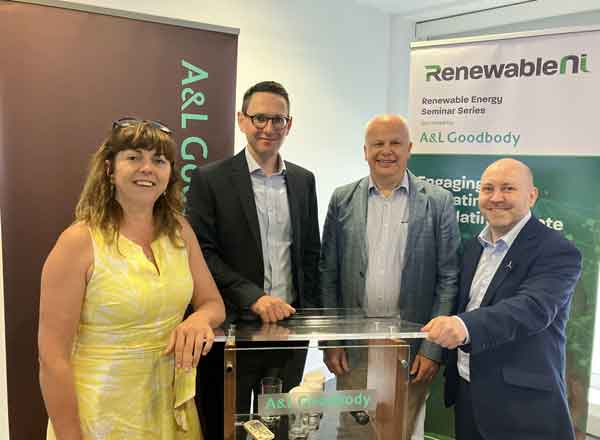Geovisualization tools can supplement the statistical analyses of landscape-level wildfire behavior by enabling the discovery of nuanced information regarding the relationships between fire spread, topography, fuels, and weather. The objectives of this study were to develop and evaluate the effectiveness of geovisualization tools for analyzing wildfire behavior and specifically to apply those tools to study portions of the Thomas and Detwiler wildfire events that occurred in California in 2017. Fire features such as active fire fronts and rate of spread (ROS) vectors derived from repetitive airborne thermal infrared (ATIR) imagery sequences were incorporated into geovisualization tools hosted in a web geographic information systems application. This geovisualization application included ATIR imagery, fire features derived from ATIR imagery (rate of spread vectors and fire front delineations), growth form maps derived from NAIP imagery, and enhanced topographic rasters for visualizing changes in local topography. These tools aided in visualizing and analyzing landscape-level wildfire behavior for study portions of the Thomas and Detwiler fires. The primary components or processes of fire behavior analyzed in this study were ROS, spotting, fire spread impedance, and fire spread over multidirectional slopes. Professionals and researchers specializing in wildfire-related topics provided feedback on the effectiveness and utility of the geovisualization tools. The geovisualization tools were generally effective for visualizing and analyzing (1) fire spread over multidirectional slopes; (2) differences in spread magnitudes within and between sequences over time; and (3) the relative contributions of fuels, slope, and weather at any given point within the sequences. Survey respondents found the tools to be moderately effective, with an average effectiveness score of 6.6 (n = 5) for the visualization tools on a scale of 1 (ineffective) to 10 (effective) for postfire spread analysis and visualizing fire spread over multidirectional slopes. The results of the descriptive analysis indicate that medium- and fine-scale topographic features, roads, and riparian fuels coincided with cases of fire spread impedance and exerted control over fire behavior. Major topographic features such as ridges and valleys slowed, or halted, fire spread consistently between study areas. The relationships between spotting, fuels, and topography were inconclusive.

Ignite Your Designs with 25 Dazzling Fire Fonts

Fire, Free Full-Text

Fire, Free Full-Text

Fire - Wikipedia
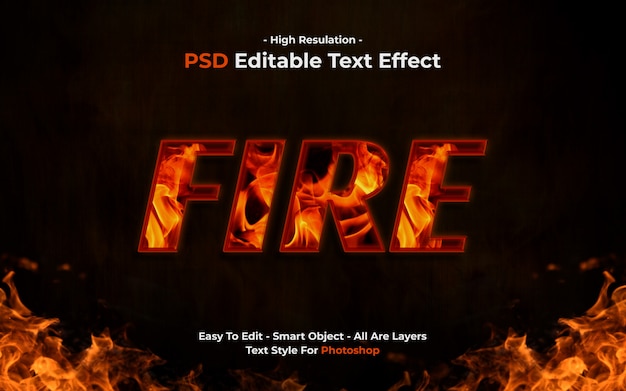
Premium PSD Fire text effect template

FREE NEW OB42 FREE FIRE 💔🤡 PANEL [ AIMBOT + CHAMS + AIM AWM

Fire, Free Full-Text

Fernando Mazza on LinkedIn: Thank you all Free Fire players and fans!
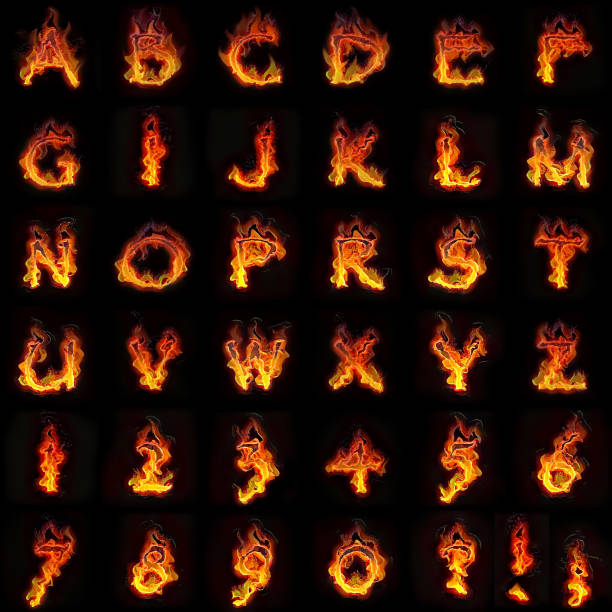
Fire Font Text All Letters Of Alphabet Stock Photo - Download

Free Fire New Bundles LUCK ROYALE I Got All New & RareBundles In

Two minutes may be all you have to escape a home fire — the





